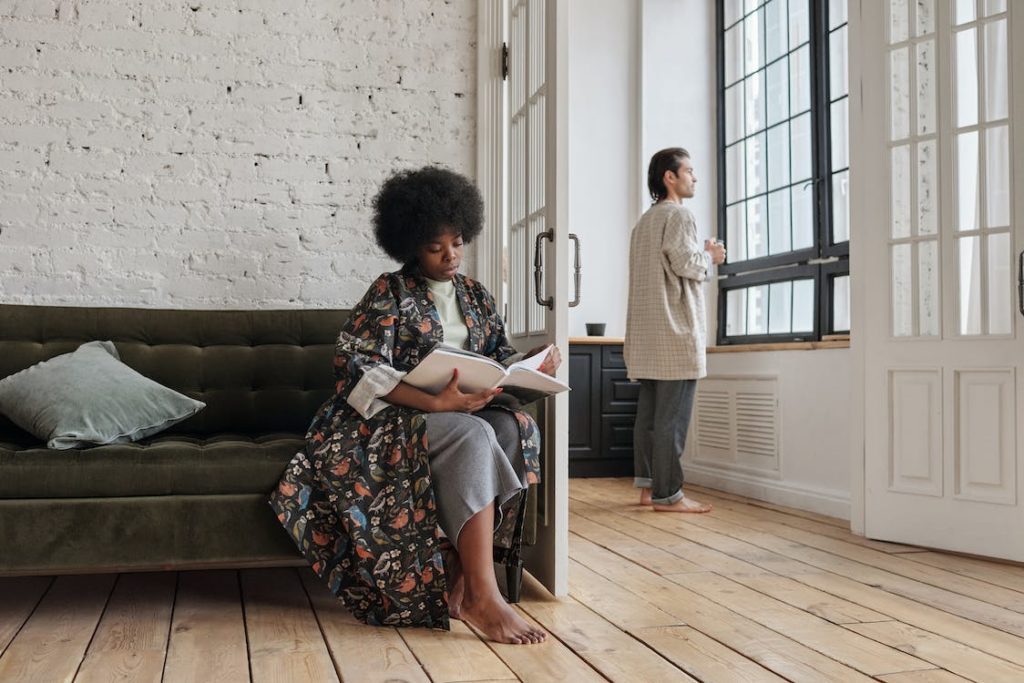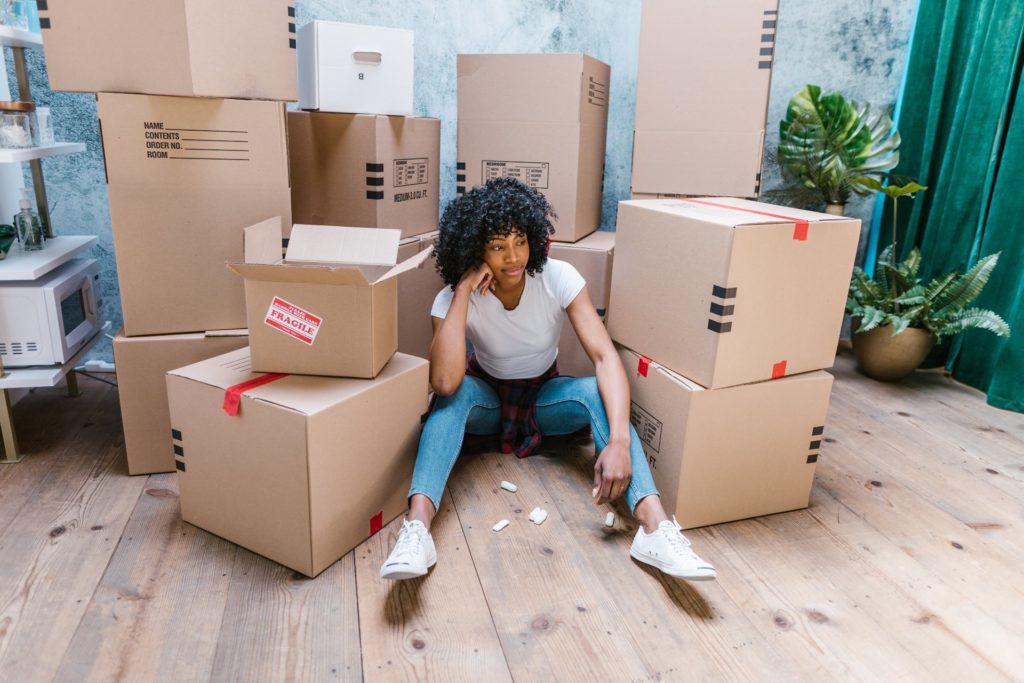In the United States, owning a home is the path to wealth for most people. While you may not pay off your mortgage for 15 or 30 years, once it is paid, you will hold an asset that will continue to grow in value, especially if you continue investing in routine maintenance and occasional upgrades.
So, here you are asking: How do I plan to buy a home in the future so I can get there, too? Ultimately, the answer isn’t that simple. Finding the money necessary to buy a home is tough, but there’s much more at play here than your savings. Your credit score, income, local market, and work history will impact your journey as well, which is why it’s a great thing that you’re preparing in advance. With that said, since you’re asking how to plan to buy a home in the future, let’s break down all of your financial responsibilities.
How Do I Plan to Buy a Home in the Future?
Whether your timeline is six months out or six years out, the sooner you begin planning how to buy a home, the less stressful the endeavor will be. In truth, most people think that the process starts with saving money, but you don’t necessarily have to have money to set aside to begin preparing.
Regardless of how much you have in savings, there are two other aspects a mortgage broker will inspect closely — how much you earn (i.e., your income) and how much you owe (i.e., your debt). The latter forms the basis of your credit report and score, which will also be inspected closely, while the former determines just how much you might be allowed to borrow.
So, whether or not you’re ready to start saving money to buy a home, there are some other crucial steps you must complete if you plan to buy a home in the future:
- Get your credit report in order. Request a copy of your report from all three major bureaus and make sure everything is accurate. If your score is less than 750, you need to work to improve it so that you qualify for the best interest rate.
- Pay down your debt. Your debt-to-income (DTI) ratio will impact how much of a mortgage payment a lender will grant you, affecting how much you can borrow. Ideally, you will pay off all “revolving” debt,” which includes credit cards. Aim for a DTI of less than 43%.
- Avoid new inquiries. In the two years leading up to your mortgage application, you should avoid new inquiries on your report, which means not asking for new credit cards, credit limit increases, or new loans. This is because inquiries stay on your report for two years and demonstrate “credit-seeking behavior” that will raise the eyebrows of underwriters.
- Refinance if you have time. Refinancing a big expense, like a car loan, could help you cut down on your monthly payment, which means it could lower your DTI ratio. However, you should only refinance existing loans if you are more than two years out from buying a home (because refinancing will result in an inquiry on your credit report). If possible, you should also try to pay any loans off entirely rather than refinancing them.
- Check your self-employment income. If you’re self-employed, you should know in advance that it is harder to prove your income, even if you make good money. Because self-employment income is thought to fluctuate substantially more than typical employment income, your lender may average your income out over the past 2-3 years, which could lower your effective income significantly. Plan for this accordingly—you may need to offset your borrowing limit with a higher down payment.
As you can see, cleaning up your credit profile and getting your finances in order is a lot more work than just tucking away your extra dollars. Of course, saving for the cost of your home purchase is also critical. The question is, how much do you need to save?
How Much Money Do I Need Saved to Buy a House?
There is no one-size-fits-all answer if you’re wondering how much to save for your future home purchase. However, you can get to a ballpark figure if you collect some critical information and keep these considerations in mind.
Home Shopping
The biggest mistake future home buyers make is preparing for the most significant expenses, like their down payment, but they fail to consider all the seemingly small fees that will pop up as they move forward with their home shopping journey.
On paper, these expenses might not seem like a big deal, especially if you’re saving tens of thousands of dollars to buy a home. However, you certainly need to add them up and save for them so that you aren’t stressing over how to cover them when it comes time to buy your home. After all, racking up a credit card bill is the worst thing you could do when waiting for underwriters to approve your loan request.
Here’s a look at the most common home shopping expenses you should save for now if you’re planning to buy a home in the future:
- Home inspection fee: The cost of a home inspection ranges from $250 to $500, depending on where you’re located. However, you may get a home inspection and then drop out of a deal or it might not work out for other reasons. For that reason, saving enough for 2-3 inspections is a good idea.
- Home appraisal fee: Sometimes, home appraisal costs are wrapped into the closing costs. Other times, you may be asked to pay it up-front. Plan to save $300 to $450 for a home appraisal, just in case you’re asked to pay it separately.
- Time off work: Even if you’re shopping for a home locally, saving up enough money is wise to offset taking 2-3 days off work. That’s the minimum amount of time you might lose if you’re anxious to view homes, finalize the paperwork, attend inspections, or keep the deal moving along quickly.
- Daycare costs: If you have or will have small children while shopping for a home, you will have to arrange childcare at some point, like on the day of the home inspection. Setting aside a few hundred for this will help minimize your stress and help you be more flexible with scheduling. The same goes for pet care.
Down Payment
If you plan to pursue a conventional mortgage, expect to save 20% to 30% of the purchase price of your future home. For example, if you would like to buy a home for around $500,000, your down payment would be $100,000 to $150,000. Fortunately, if that sounds like an overwhelming amount of money, there are other mortgage programs with lower down payment requirements.
If you happen to be a first-time homebuyer, you could qualify for the Federal Housing Administration (FHA) loan program, in which case you will only need to put 3.5% down, assuming you meet the very relaxed minimum credit score requirements. Even if you have a bad credit score, you could still qualify, but you may be asked to put down up to 10%. On a $500,000 home, a 3.5% down payment equals $17,500.
If even 3.5% sounds like a stretch for your budget, some specialty programs are worth looking into. For instance, the USDA home loan program is designed to support rural development, but it’s available in more areas than you’d think. If you’re in a qualifying area, so long as you don’t exceed the generous income limits, you could buy a house with as little as 0% down.
Closing Costs
In a buyer’s market, you may not have to pay closing costs, or you may not have to pay as much in closing costs. That’s because closing costs could be covered in full by the seller of the home, but realize that the trend in recent years has been the opposite, with buyers covering all closing costs in competitive areas.
Generally, closing costs equal 3% to 6% of the loaned amount. Since your down payment will lower the loaned amount, putting in a larger down payment can help minimize your closing costs. If your home loan is $400,000, your closing costs will be $12,000 to $24,000.
Now, even if you plan to buy a home in the future when the market may be in the buyer’s favor, it’s a good idea to save at least half of your expected closing costs. Even in a cooler market, getting a seller to pay all closing costs can be tough, so buyers and sellers often split it in half.
Points and Credits
For most borrowers, the opportunity to lower the effective interest rate on their mortgage is an appealing offer, which is why you should plan to set aside some additional funds in case you are given a chance to buy points. On the other hand, if you want to lower your closing costs, you might be interested in using lender credits to save money up up-front.
- Discount points are used to lower the interest rate over the life of your mortgage, potentially saving you tens of thousands of dollars so long as you don’t plan on refinancing in the next 5-10 years. Each point costs 1% of the loan amount and will lower your interest rate by 0.25%.
- Lender credits are the opposite of points. You will agree to pay a higher interest rate, and your lender will give you money to offset your closing costs. You should use points wisely as a small increase in your interest rate over a 15- or 30-year period can add up to a substantial amount of money.
Ultimately, getting the lowest possible interest rate is a good goal. So, in addition to saving for discount points, you should go back to step one and try to get your credit score as high as possible.
Preparing for Homeownership
Ask anyone, “How do I plan to buy a home in the future?” In response, they will likely tell you to think beyond the transaction and prepare yourself for the other costs associated with home ownership.
As soon as you attend the closing ceremony and get the keys, there’s going to be a lot on your mind —like renting a moving truck, making small improvements, or even investing in things like new flooring.
In addition to those expenses, you need to consider the ongoing costs of homeownership so that you don’t find yourself in a tight place as soon as you step into your new home. These ongoing costs may include:
- Homeowner’s Association (HOA) fees could easily add up to a few hundred dollars each month. These are paid separately from your mortgage directly to the community you live in. However, they may cover the cost of lawn maintenance, snow removal, or other services.
- Mortgage payments are an obvious expense, but what about mortgage insurance? You might be required to pay it if you didn’t put 20% down, but you may be able to get rid of it once you have paid your loan down to a certain amount, so ask your lender.
As long as you have these expenses covered, your planning will ensure you have enough money to invest in what you’re most excited about. Preparation is key, whether it be building a new fence, buying furniture, or putting in a garden so that you can make the most of your new backyard.
Take The First Steps Towards Homeownership
With all this information laid out for you, planning to buy a home in the future might seem a bit overwhelming, but now you’ve got a solid foundation to build upon so that you can be prepared.
Now, if you’re ready to officially begin your journey toward being a homeowner, one of the most important things you need to do is partner with the right lender. If you need help finding the perfect mortgage lender, consider contacting a mortgage broker. These community mortgage experts work with you to find the perfect lender and mortgage product for your needs.












